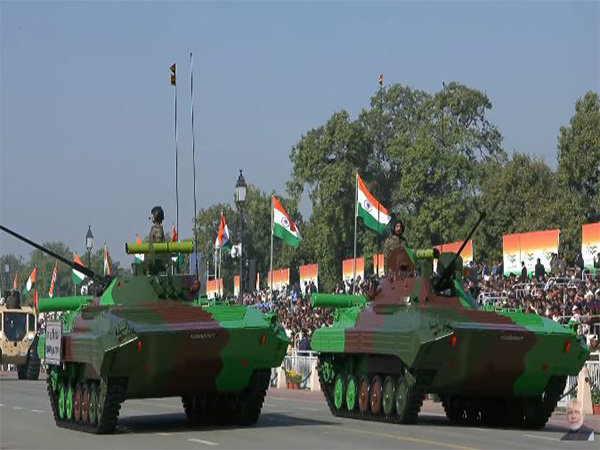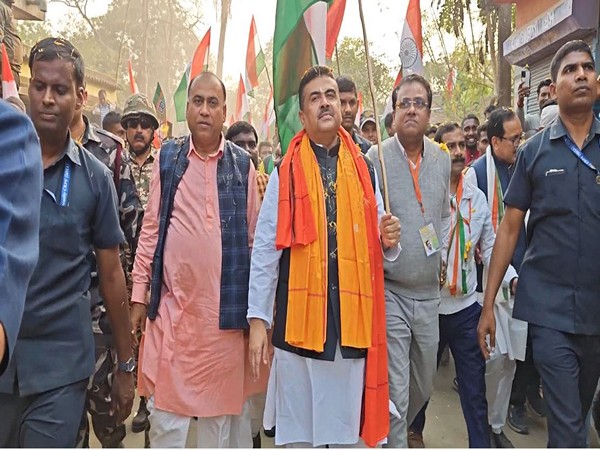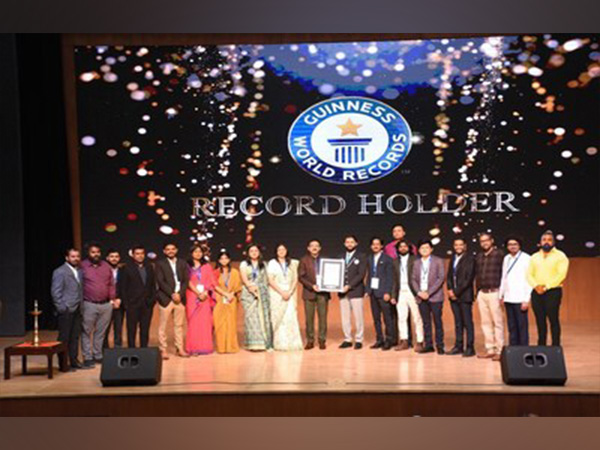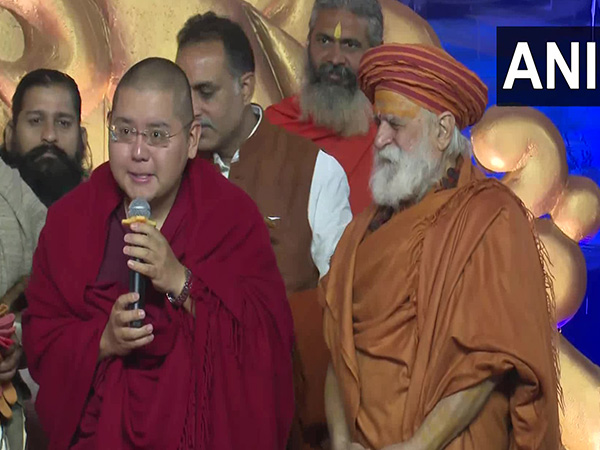New Delhi [India], January 26 (ANI): The Indian Army’s impressive display of military might and technological advancements at the 76th Republic Day parade stole the show at the Kartavya Path on Sunday.
The T-90 Bhishma tank, commanded by Captain Navjot Singh Atwal of the 74 Armoured Regiment, led the Mechanised Columns, and demonstrated India’s cutting-edge military technology.
The T-90 Bhishma is a symbol of India’s cutting-edge military prowess, designed on the Hunter-Killer concept. It boasts a powerful 125 mm smooth bore gun, a 7.62 mm co-axial machine gun, and a 12.7 mm anti-aircraft gun. Equipped to fire laser-guided missiles, this tank can engage targets at a range of up to five kilometres, even during the night.
Its versatility is unmatched, as it is capable of operating underwater, adding to its strategic advantage. The 74 Armoured Regiment, to which this tank belongs, has a rich and glorious history
Raised on June 1, 1972 at the Armoured Corps Centre and School in Ahmednagar, the regiment has etched its name in golden letters in the annals of India’s military history. On November 27, 2011, the regiment was honoured with the presentation of former President Pratibha Singh Pati.
Over the years, it has earned numerous accolades, including one Param Vishisht Seva Medal, one Shaurya Chakra, four Sena Medals for Gallantry, and one Vishisht Seva Medal.
The regiment’s motto, ‘Vijay Ya Veergati’ embodies its indomitable spirit. The regimental colours, Blood Red and Steel Grey, signify the battlefield and the steel-clad fleet of tanks that stands as the regiment’s formidable arsenal.
As the T-90 Bhishma rolled past the saluting dais, it reminded us of the unwavering dedication and courage of the Indian Army, standing resolute in the service of our great nation.
The Nag Missile System (NAMIS), commanded by Lt Ritik Choudhary, was another highlight of the parade. This indigenously designed tank destroyer features a crewless turret armed with six Nag missiles, a Remote-Controlled Machine Gun, and a Smoke Grenade Launcher System.
At its core is the Nag missile, a Fire-and Forget, top-attack Anti-Tank Guided Missile capable of destroying enemy tanks up to five kilometres away. Operational in all weather and lighting conditions, it represents the pinnacle of India’s defence technology.
NAMIS has been developed by the Defence Research and Development Laboratory, Hyderabad, in collaboration with leading Indian defence firms.
Following NAMIS were two BMP-2 Infantry Combat Vehicles, also known as ‘SARATH’. Commanded by Lt Saurav Pratap Singh these amphibious vehicles are armed with a 30mm Automatic Cannon, a 7.62mm PKT Machine Gun, and Konkurs Anti-Tank Missiles with a range of up to four kilometres.
Enhanced with Thermal Imaging sights, they dominate the battlefield, proven during Operation Snow Leopard in the harsh terrains of Ladakh and Sikkim. 
The detachments of the Infantry Column showcased India’s advanced military capabilities, beginning with the All-Terrain Vehicle (ATV) CHETAK led by Captain Lakshesh Sihag and Specialist Mobility Vehicle. KAPIDHWAJ led by Nb Sub Charan Singh designed for maneuvering in tough terrains, especially in high-altitude regions.
Following these were the Light Specialist Vehicle, Bajrang, and the Vehicle Mounted Infantry Mortar System, Airawat being led by Lt Abhijit Ahlawat and Sub Satvir Singh respectively, offering enhanced protection and firepower for high-intensity combat.
The parade also features the NANDIGHOSH, Quick Reaction force vehicle (Heavy) led by Maj Radhika Sen and TRIPURANTAK, Quick Reaction Force Vehicle (medium) led by Maj Srishti Sharma developed under the AatmaNirbhar Bharat initiative.
These indigenously produced armoured vehicles excel in mobility and protection and are already serving in UN peacekeeping operations. These displays highlight India’s self-reliance in defence manufacturing and its technological advancements in global peacekeeping. (ANI)
The presentation of these advanced systems highlighted the Indian Army’s ongoing efforts to enhance its defence capabilities and showcase the success of the ‘Make in India’ initiative. 
This display of India’s weapon systems was followed by six other defence technologies: the BrahMos missile system, the Pinaka Multi Launcher Rocket System, the BM-21 Agnibaan Multiple-Barrel Rocket Launcher, Akash Weapon System; Integrated Battlefield Surveillance System; the Short-Span Bridging System also displayed at the Kartavya Path.
These displays showcased India’s self-reliance in defense manufacturing and its technological advancements in global peacekeeping.
Earlier, President Droupadi Murmu unfurled the national flag at Kartavya Path on the occasion of the 76th Republic Day, followed by the national anthem with a thunderous 21-gun salute using 105-mm Light Field Guns, an indigenous weapon system.
Notably, this year, India invited Indonesian President Prabowo Subianto as the chief guest for the Republic Day celebrations.
This year, Republic Day highlights the 75 years since the enactment of the Constitution and emphasizes “Jan Bhagidari” (people’s participation).
Earlier, Prime Minister Narendra Modi laid a wreath at the National War Memorial, situated at India Gate, and paid tribute to the brave hearts who laid down their lives for the country, following which President Murmu unfurled the national flag, assisted by Indian Navy officers Lieutenant Shubham Kumar and Lieutenant Yogita Saini. (ANI)
Disclaimer: This story is auto-generated from a syndicated feed of ANI; only the image & headline may have been reworked by News Services Division of World News Network Inc Ltd and Palghar News and Pune News and World News
HINDI, MARATHI, GUJARATI, TAMIL, TELUGU, BENGALI, KANNADA, ORIYA, PUNJABI, URDU, MALAYALAM
For more details and packages

















